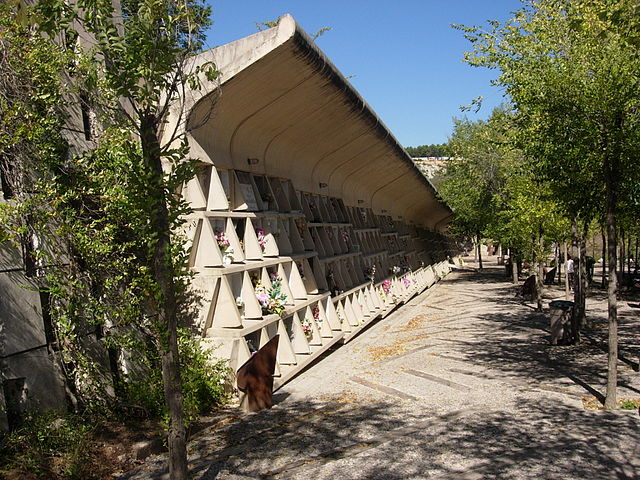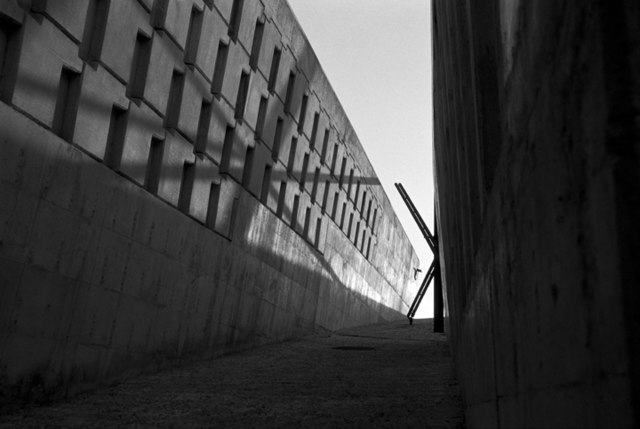Enric Miralles
Spanish architect (1955–2000) From Wikipedia, the free encyclopedia
Spanish architect (1955–2000) From Wikipedia, the free encyclopedia
Enric Miralles Moya (12 February 1955 – 3 July 2000) was a Spanish architect from Barcelona, Catalonia.[1] He graduated from the Barcelona School of Architecture (ETSAB) at the Universitat Politècnica de Catalunya (UPC) in 1978. After establishing his reputation with a number of collaborations with his first wife Carme Pinós; the couple separated in 1991. Miralles later married fellow architect Benedetta Tagliabue, and the two practiced together as EMBT Architects. Miralles' magnum opus and his largest project, the Scottish Parliament Building, was unfinished at the time of his death.

Enric Miralles | |
|---|---|
 The Scottish Parliament Building committee room ceiling. | |
| Born | 12 February 1955 |
| Died | 3 July 2000 (aged 45) Sant Feliu de Codines, Catalonia, Spain |
| Occupation | Architect |
| Awards |
|
| Practice | Piñon-Viaplana Miralles + Pinós EMBT |
| Buildings | Scottish Parliament Building Igualada Cemetery |








In 1978, Miralles completed his examinations at the Escola Tècnica Superior d'Arquitectura (ETSAB) in Barcelona. From 1973 to 1978, he worked in the architect's office of Albert Viaplana and Helio Piñón.[2] Whilst there—among other things—he was involved in the construction of the Plaça dels Països Catalans, the forecourt for the Estació de Sants. In 1984, after several architectural competition awards, Miralles formed his own office in Barcelona with his first wife Carme Pinós, which they led together until 1991. Within the rising Spanish architecture scene of the late 1980s following the death of Francisco Franco, their unusual buildings attracted international attention. As a result, they received numerous commissions from Spain and overseas. After their separation, Miralles and Pinós continued to work in separate offices.
In 1993, Miralles formed a new practice with his second wife, the Italian architect Benedetta Tagliabue, under the name "EMBT Architects". She resumed the practice under his name after his death. The most important projects; the Scottish Parliament Building in Edinburgh and the multistoried building for the Spanish gas company Gas Natural in Barcelona, were only finished after his death. Miralles died at the age of 45 as the result of a brain tumor.[3]
The independent architectural language of Miralles can be difficult to classify in terms of contemporary architecture. It is influenced by Spanish architects, such as Alejandro de la Sota, José Antonio Coderch and Josep Maria Jujol, and also from international greats such as Le Corbusier, Louis Kahn and Alvar Aalto and the Russian Constructivist movement of the early 20th century. The freely formed buildings utilising massive building materials and steel, develop from their relationship with the environment and connect themselves to it. The form is constructed using often unusual materials which are generally left with natural surfaces. Form and material interpret the place, traditions and history in a personal and poetic art, as his critics attest. From the starting point of the townscape or landscape he would design a building in its totality, down to the details of the furnishing and the exterior installations. Therefore, the execution of the details was just as important to the communication of meaning as the main form. Both were developed over a large number of designs and with numerous models as the main tool of the design process.
Charles Jencks, writing on the problems surrounding the construction of the Scottish Parliament Building and the controversial reception of its design for Architecture Today, summed up Miralles' architectural style:
Miralles, like many other postmodern architects, has a preference for piling on the motifs and ideas: upturned boats, keel shapes, deep window reveals like a castle, crow-steps, prow shapes, diagonal gutters, 'bamboo bundles' and above all the dark granite gun-shape that repeats as an ornamental motif at a huge scale. Everywhere broken silhouettes compete for attention, just like the alleyways next door. That's fine, and contextual, but it's quite a meal. As a result of the complexity, the parliament is really a kind of small city, with much too much to digest in one short three-hour sitting. The Scottish parliament will take time to judge: maybe not 50 years but three or four visits, long enough to absorb all the richness and get used to those jumpy black granite guns, the most arbitrary of several questionable ornaments.[4]
Miralles was an active teacher at numerous universities. In 1985, he became a professor at the ETSAB in Barcelona. During 1990, he took over the conceptional design chair at the Städelschule in Frankfurt am Main. In 1993, Miralles received an invitation from Harvard University to occupy the Kenzo Tange chair. He taught as a guest lecturer at Columbia University in New York, Princeton University in New Jersey, the Architectural Association in London, the Berlage Instituut in Rotterdam, the Mackintosh School of Architecture in Glasgow and the Universities of Buenos Aires and Mexico City.
In Partnership with Carme Pinós
In Partnership with Benedetta Tagliabue
Seamless Wikipedia browsing. On steroids.
Every time you click a link to Wikipedia, Wiktionary or Wikiquote in your browser's search results, it will show the modern Wikiwand interface.
Wikiwand extension is a five stars, simple, with minimum permission required to keep your browsing private, safe and transparent.